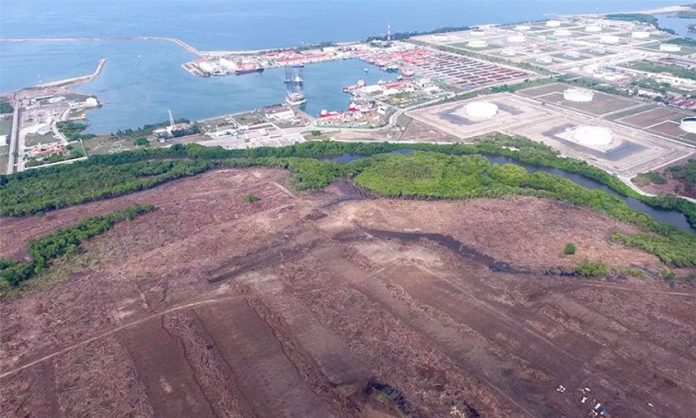The government’s plan to build a new oil refinery on the Tabasco coast involves high risks of flooding and other environmental problems but remains viable, according to an environmental impact statement (EIS) prepared by the state oil company.
Released by the Security, Energy and Environmental Agency (ASEA) late Tuesday, the document — parts of which were not made public — says the refinery site is subject to flooding from both sea and river water and susceptible to storm tides and erosion.
The EIS also says the refinery will affect the quality of air and water in the area and have an impact on local wildlife.
However, Pemex said that the impacts “will be controlled, mitigated or compensated” and that the operation of the refinery “will totally comply” with existing environmental laws and is economically viable.
ASEA has 60 days to assess the EIS. The agency is part of the Secretariat of the Environment and its chief is a presidential appointee whose appointment doesn’t require approval by Congress.
The state-owned company and the Secretariat of Energy were given the task of building the refinery in the Gulf coast port of Dos Bocas after the federal government last month scrapped the bidding process on the grounds that the bids from private companies were too high and the project would take too long.
While Pemex acknowledged the environmental risks of the project, parts of its EIS that detail the extent of the predicted impact were blacked out because the government says the information should remain confidential and that its release could increase financing costs.
Among the classified information are details about which species of wildlife will be displaced, how much vegetation will be affected, the volumes of water that will be required to build and operate the refinery and the area of land for which change of land use permits will be required.
Details about estimated greenhouse gas emissions during different stages of the project, the quantity of waste that will be produced and the impact on nearby beaches were also withheld.
Once the refinery is in operation, Pemex said, it will aim to reduce contamination by producing gasoline and diesel that have low sulfur contents and by using emissions control systems.
The refinery is expected to process 340,000 barrels per day of Mexico’s flagship grade, Maya heavy crude.
President López Obrador says the US $8-billion project will help to reduce Mexico’s reliance on fuel imports.
He officially launched the project at a groundbreaking ceremony on June 2 and has pledged to have the refinery ready for operation by mid 2022.
Major ratings agencies have been critical of the project, arguing that it is unnecessary and will divert resources from Pemex’s profitable exploration and production activities.
A financial analysis of the project completed by the Mexican Institute for Competitiveness, a think tank, determined that the refinery project only has a 2% chance of success.
Earlier this month, Fitch Ratings downgraded the heavily indebted state oil company to junk status and if another ratings agency follows suit, there would be a sell-off of up to US $16 billion worth of Pemex bonds.
